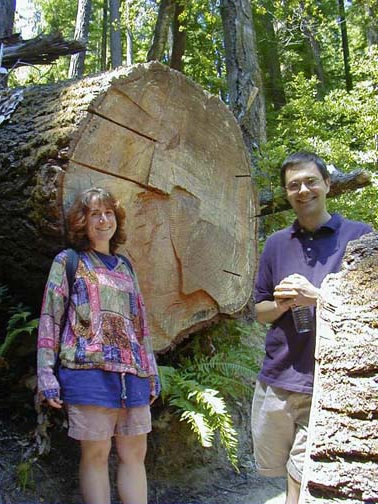A mobile app that teaches kids math and business concepts by letting them run a virtual pizza parlor. A clearinghouse for educational technology. A simulation for financial software. A parent in Omaha, Neb., who is better equipped to advocate for his children’s schools.
All owe thanks to the Stanford Graduate School of Education’s master’s program in Learning, Design and Technology (LDT), which celebrates its 20th year in 2017.
The 12-month program, which culminates in an expo of student projects each summer, has given rise to hundreds of educational technology products, startups and ideas, and sends its graduates into institutions around the world to innovate and transform.
But the program’s distinction – when launched in 1997 and now – is its focus on identifying, researching and crafting a solution to a learning problem, not on technology by itself.
“To me it’s very significant, the order of the acronym,” said Dan Gilbert, MA ‘02. “Learning first.”

Early days
LDT arose from a precursor program run by Prof. Decker Walker, a curriculum expert who helped build the first detailed virtual dissection program for biology students, Frog Island.
In the 1980s, inspired by the Apple II and by talks with computer science Prof. Terry Winograd, a pioneer in human-computer interaction design, Walker and Prof. Bob Hess ran a master’s program that centered on technology in the classroom, using the then-state-of-the-art Apple II and the IBM PC. After three years, Hess’s diagnosis of Amyotrophic Lateral Sclerosis (ALS) and subsequent retirement put the program on hold.
Then, in the 1990s, Dean Richard Shavelson hired faculty with sufficient ed-tech passion – Brigid Barron, Shelley Goldman, Jim Greeno, Roy Pea and future Dean Daniel Schwartz, among others – to create vibrant graduate programs in the field. They sparked not just LDT but a doctoral program in Learning Sciences and Technology Design.
“We were in Silicon Valley and we were known leaders,” Shavelson said. “I thought we needed a fresher approach than tech built for the classroom.”

The program was intentionally interdisciplinary and project-based.
“We agreed that students would have a variety of backgrounds. We agreed on collaboration, social and situative learning as a key part of what we would do,” Walker said. “User testing, making prototypes, risk taking, making mistakes, using concepts from theory and research as a framework for your design.”
The program launched fall 1997 for a 1998 founding class.
These first LDT students, at the turn of the 21st century, designed for PalmPilots and desktop computers, rather than the mobile platforms of today. From the beginning, though, they conceived of learning far beyond the classroom.
“We got to design the initial interface for the BMW for assisted backup and reverse,” remembered Kristin Palmer, MA ’99, now director of online learning at the University of Virginia. “They didn’t use our design, but it was so cool to work on the problem.”
Schwartz taught a popular course from almost the very beginning.
“Dan’s contribution to all of us was that we walked out of that class asking, ‘Where’s the learning?’” Gilbert said. “Distilling that concept to the three-word question was a huge contribution to LDT and to the field.
“Related to that, he asked, ‘How do you show it?’ His guidance and prodding and his creative way of expressing it really pushed us students to show how you would learn something.”
Build to learn
While students are focused on solving a problem, they’re simultaneously learning the ins-and-outs of bringing a product to prototype.
“We believe that the learning opportunities are immense when students apply what they’re learning in classes to real-world projects,” said Karin Forssell, MA ’92, PhD ’11, current director of the LDT program. “The point is not to launch a product, but sometimes students do. They are able to do that because of our strong focus on adding value. By the time they’re done, they’ve built an idea and tested it. They have evidence that this could really work.”

“Absolutely the business of an education school is to make stuff,” Shavelson said. “We make curriculum. We make tests. We make products. We make tools.”
Some of the students who carried on their ideas following graduation or continue to work in the field include:
- Piya Sorcar, MA ’06, PhD ’09, who grew her LDT project into TeachAIDS, a nonprofit whose culturally sensitive rich-media materials on HIV prevention are used in more than 80 countries.
- Jacob Klein, MA ’10, and Gabriele Adauto, MA ’10, who founded Motion Math based on their LDT project to help kids learn fractions.
- Anna Ly, MA ’12, who joined the Joan Ganz Cooney Center, a research group in Sesame Workshop to advance children's learning through digital media. Today, she works on innovation and education at LEGO.
- Pam Shime, MA ’16, a former lawyer and NGO program director, who works in the Stanford School of Medicine’s Department of Psychiatry, developing interventions to reverse the neurological effects of childhood trauma. They include her LDT project, a game that’s an intervention for children experiencing traumatic stress.
- Leonard Medlock, MA ’11, the No. 2 employee at ed-tech resource site EdSurge, who built the firm to 50 people and led an automated function to connect schools and ed-tech products.
Members of the LDT community say the program’s value is its combination of entrepreneurial skills and problem-based thinking.
“You’re developing your entrepreneurial skill set, but also, understanding the x’s and o’s of education more intimately,” Medlock said.
Added Palmer, of the University of Virginia: “Some of our projects failed and some were triumphant … It was the great insight into what that process looked like that was the great gift of LDT."
Top photo: At the LDT Expo each spring, MA candidates showcase their projects to funders, colleagues and the community at large. This is the 2013 event.
